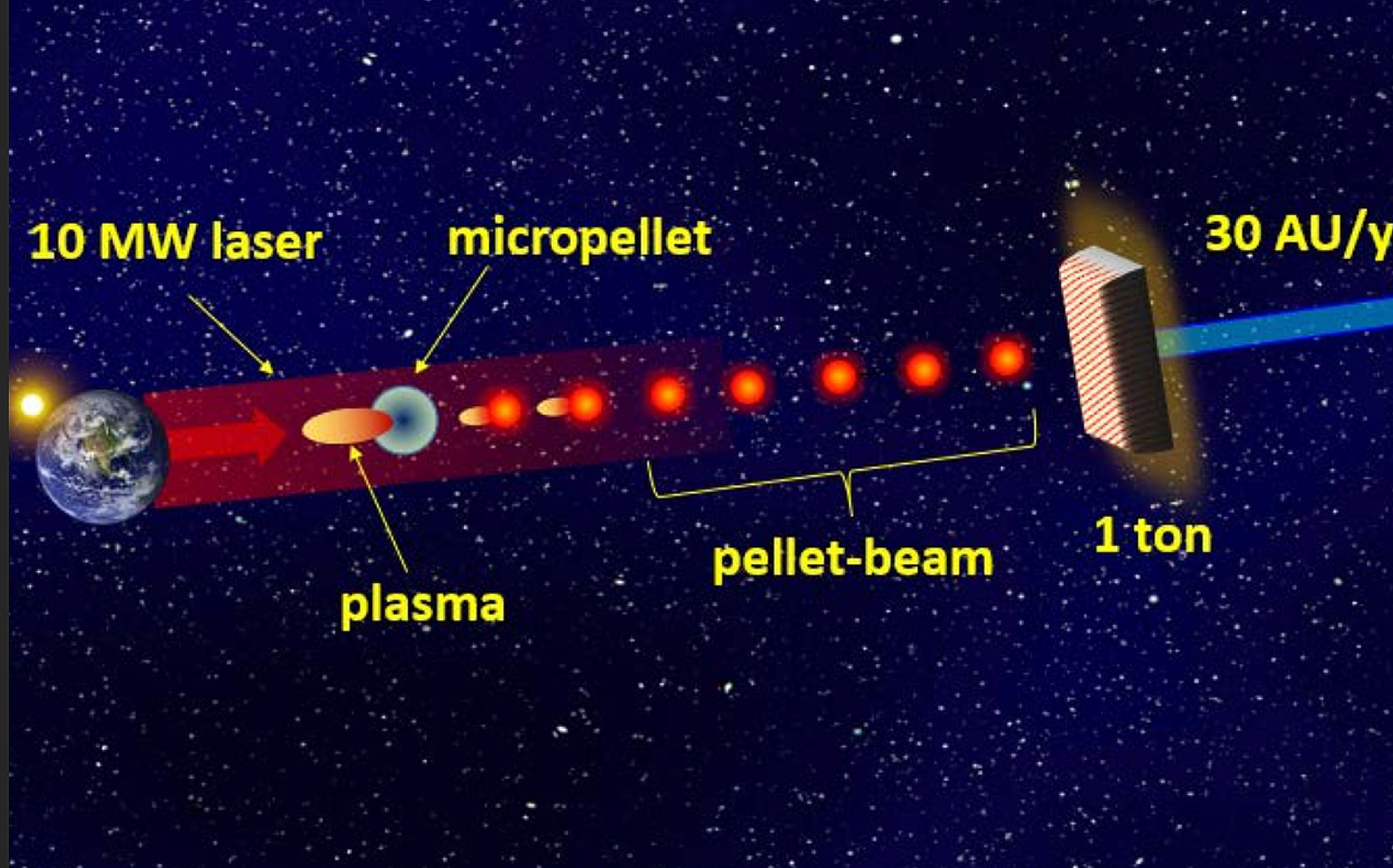Artur Davoyan
University of California, Los Angeles
This proposal examines a new propulsion architecture for fast transit of heavy (1 ton and more) payloads across the solar system and to interstellar medium. Inspired by the sail-beam concept we create a pellet-beam – a beam of microscopic hypervelocity (>120 km/s) particles propelled by laser ablation. The pellet beam is then pushing a spacecraft to desired orbits and destinations, including fast exit trajectories. Of a particular interest are fast transit interstellar precursor missions. In this study we will examine utility of pellet-beam to propel 1 ton payloads to 500 AU in <20 years.
Space exploration is hindered by the limitations of rocket equation. Indeed, only two space probes have left the heliosphere and entered the interstellar medium. It took Voyager 1 cruising at a record breaking velocity of 3.6 AU/year 35 years to reach the heliopause. Pellet-beam aims to transform the way deep space is explored by enabling fast transit missions to far away destinations. With the pellet-beam outer planets can be reached in less than a year, 100 AU in about 3 year and solar gravity lens at 500 AU in about 15 years. Importantly, unlike other concepts pellet beam allows propelling heavy spacecraft (~1 ton) which substantially increases the scope of possible missions.
In Phase I effort we will demonstrate feasibility of the proposed propulsion concept by performing detailed modelling of different subsystems of the proposed propulsion architecture, and by performing proof of concept experimental studies. We will also explore the utility of the pellet beam for fast transit interstellar probe missions.
































